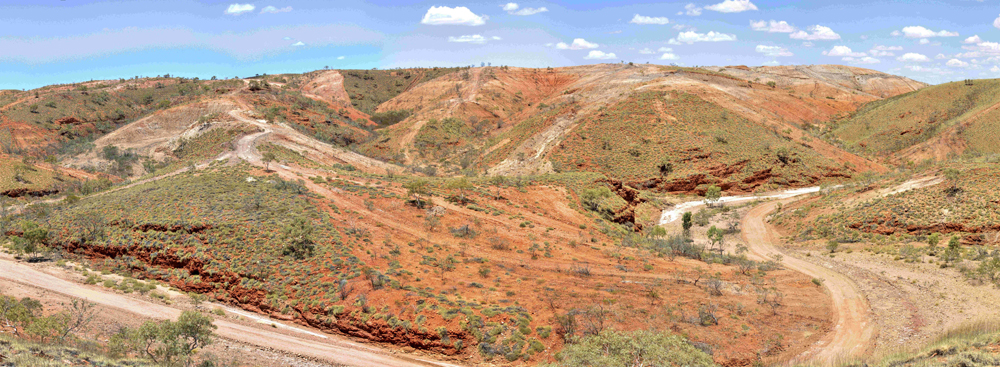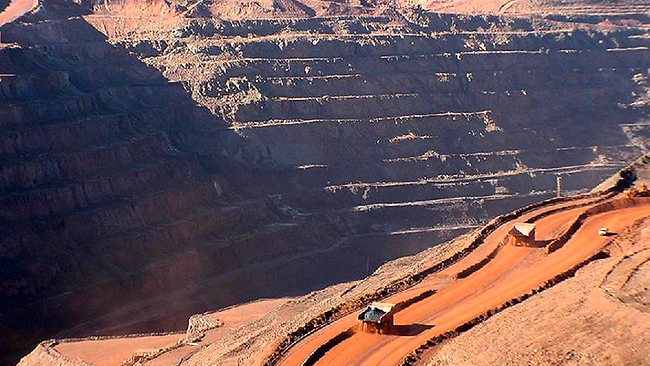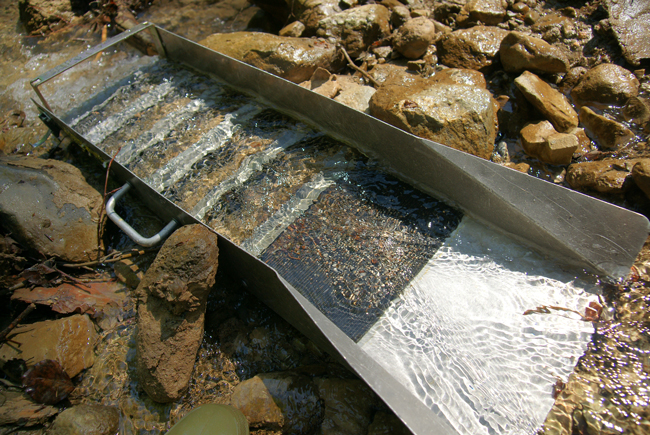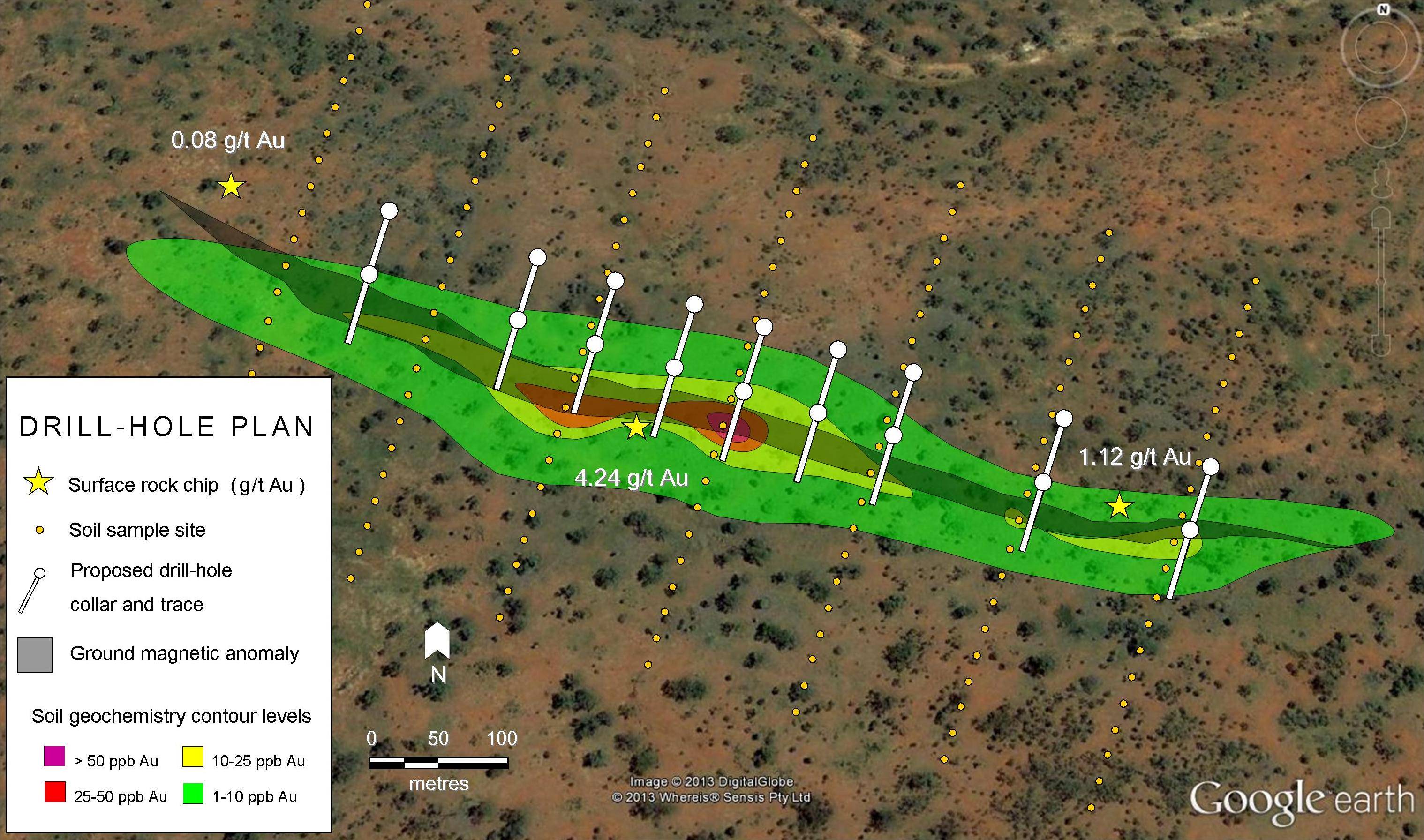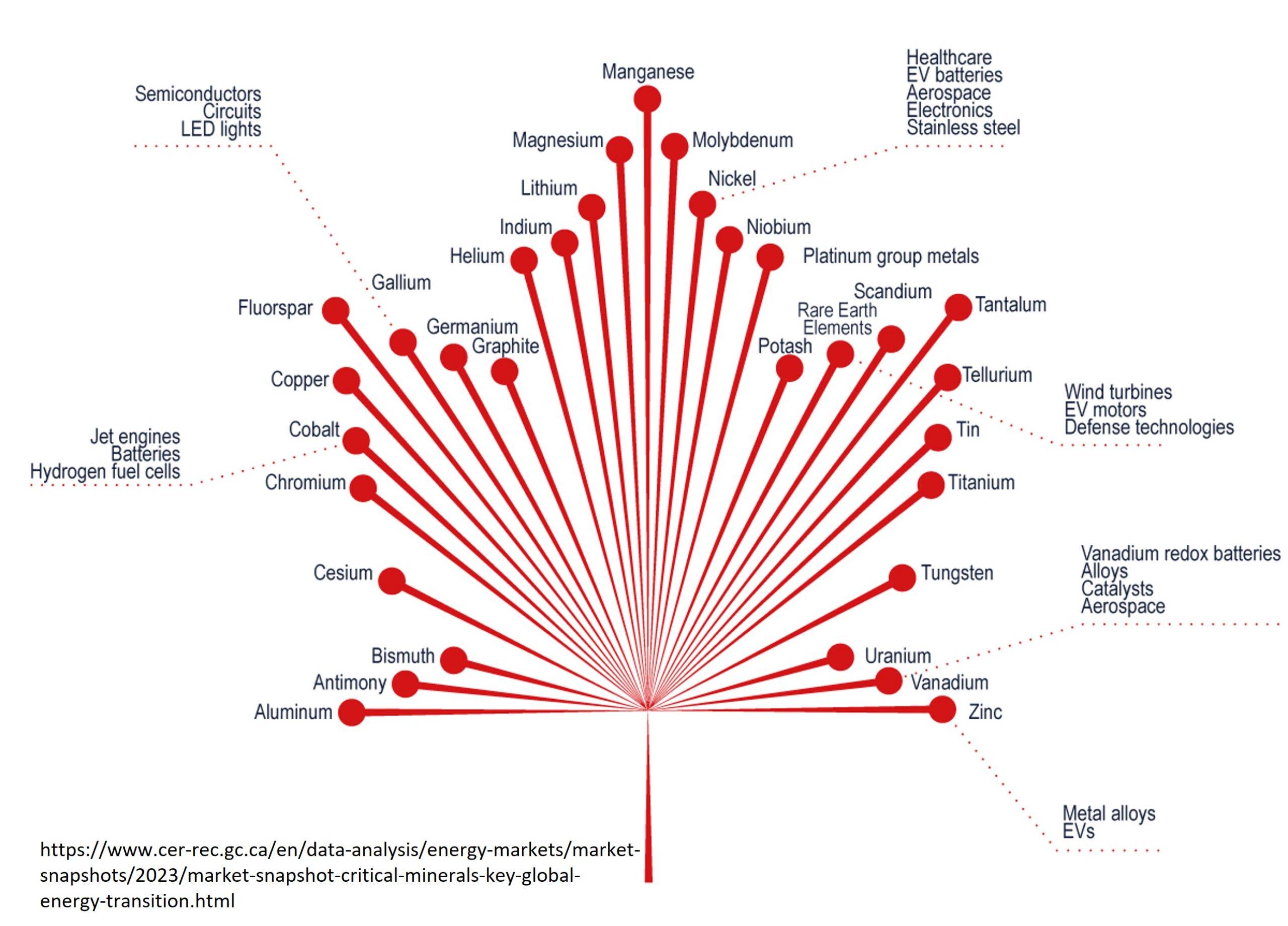The Bathurst Mining Camp (BMC) is one of the world’s oldest base metal mining districts and one of Canada’s largest volcanogenic massive sulphide (VMS) deposits. Primary ore commodities include lead, zinc, copper, gold, and silver.
The BMC hosts 46 deposits, 25 of which comprise reserves of 1 million tons or more. The world-renowned Brunswick No. 12 Deposit contains reserves of 229 million tons. Now closed, Brunswick No. 12 was one of the world’s longest operating mines. It ran for 49 years and produced over 136 million tons of ore. Mining of the BMC began as early as 1911, when the Nepisiguit Iron Ore Deposit was the only known resource. It was not until 1952 that an electromagnetic survey would discover the Brunswick No. 6 deposit. This discovery set off a rush for base metal staking that turned the BMC into one of the most productive and economically important mining districts in the world. Most of the major deposits were found at or just below the surface, beneath a thin layer of glacial sediments. The BMC is also known for achieving several historical firsts in VMS deposit mapping, including the first electromagnetic, gravity, and 3D seismic surveys.
Geological Setting
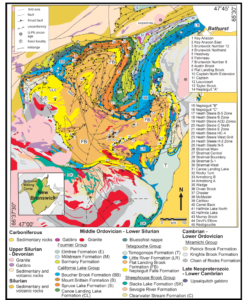
The BMC is located in the Miramichi Highlands of New Brunswick, Canada. It is a roughly circular complex 70 km in diameter (Figure 1). The complex is bounded by faults and younger Carboniferous (360-300 million years old) sedimentary rocks. A thin layer of glacial sediments covers much of the complex at the surface. The BMC comprises sedimentary basement rocks of the Miramichi Group (deep marine sandstones and shales), overlain by the Cambrian – Ordovician (~540-445 Ma) aged Bathurst Supergroup. All VMS deposits occur within the Bathurst Supergroup stratigraphic unit at several distinct positions.
The Bathurst Supergroup records a complex tectonic history, resulting from ancient continental collision and closure of the ancient Iapetus Ocean. This collision formed an accretionary complex (rocks amassed on the surface of a tectonic plate during subduction) known as the Tetagouche-Exploits terrane, in which the VMS deposits are located. This tectonic setting produced a large-scale hydrothermal mineralizing period that lasted up to 14 million years from 480 – 465 Ma. Four hydrothermal events took place during the mineralizing period, forming distinct stratigraphic horizons of sulphide deposits. These include the Chester, Caribou, Brunswick, and Stratmat deposits (Figure 2).
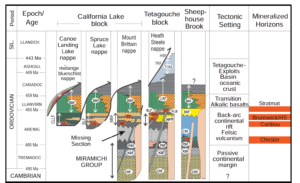
VMS deposits form in close association with submarine volcanism in rift settings. During submarine rifting, oceanic crust is pulled apart. Magma rises from Earth’s mantle beneath the area where the crust is stretching, and sulphide-rich fluids are released from the magma. When these fluids react with seawater, base metal-rich sulphide minerals are precipitated (Figure 3). Modern analogues of these features can be found at the margins of rifting tectonic plates in the ocean and are called black smokers.
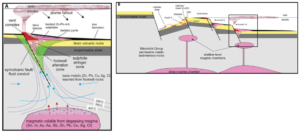
Most of the BMC deposits are associated with felsic volcanism caused by melting of ancient continental crust. The BMC is divided into four similarly-aged volcanic and sedimentary rock groups: Fournier, California, Tetagouche, and Sheephouse Brook (Figure 2). Each group represents a different piece of the accretionary complex within the Tetagouche-Exploits terrane. These pieces, or slivers, were sequentially stacked onto each other to form the Brunswick Subduction Complex. Extensive deformation and stacking of rock also occurred within each group.
Deposit Geology
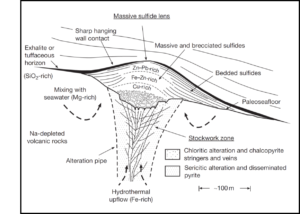
There are two main types of ore deposit in the BMC:
- Classic VMS: Ore deposits comprising massive accumulations of sulphide minerals in lens-like or tabular bodies parallel to existing sedimentary layers. Primary ore-bearing minerals include sphalerite (zinc-sulphide), galena (lead-sulphide), and chalcopyrite (copper-sulphide).
- Secondary Ore Enrichment: Gold-rich gossans and supergene zones associated with the sulphide deposits. Gossan deposits are highly weathered rock at the top (or cap) of a deposit. Supergene zones are deposits that were enriched in ore by groundwater hydrothermal metamorphism. These deposits underlie the sulphides in stockworks and alteration feeder zones and extend for hundreds of metres (Figure 3).
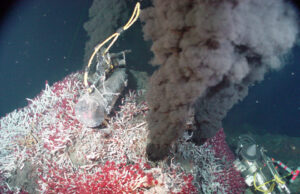
VMS deposits are characterized by predictable zones of ore distribution. The zones are thought to form due to the lateral spread of the volcanic hydrothermal vents. As the oceanic volcanic plumes spread out, they cooled and precipitated different minerals from the centre outwards (Figure 4). The hottest fluids were closest to the deposit centre and formed copper- and gold-rich ores, followed by zinc and lead ores.
Two factors ensured the concentration and preservation of these deposits:
- Anoxic (low oxygen) condition of the ambient seawater. This prevented oxidation of the sulphide ores and preserved them.
- Sustained sediment supply from neighbouring continents. Sediments settled out over the hydrothermal vents and sealed them. This prevented the escape of heat and hydrothermal fluids and concentrated the sulphide ores.
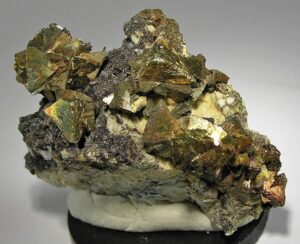
The reserves of the massive sulphide deposits in the BMC range in size from < 1 million tons to the supergiant Brunswick No. 12 deposit (> 229 million tons). The average BMC sulphide deposit is 12.7 million tons with average grades of: 4.72 wt % zinc, 1.78 wt % lead, 0,64 wt % copper, 51 g/ton gold, and 0.54 g/ton silver. Total resource estimates for the BMC are 496.9 million tons. Gold and silver grades are highly variable, ranging from 10 – 110 g/ton and 50 – 3000 ppb, respectively.
Future Outlook
The BMC has been mined continuously since the early 1900s. In 2001, the BMC accounted for a significant portion of Canada’s zinc (30%), lead (53%), and silver (17%). However, mining operations in the BMC have been winding down since the early 2000s. Much of the low-hanging fruit from the near-surface deposits has already been exploited.
Despite this, there is a high potential for subsurface base metal deposits, particularly gold. Several exploration operations are underway, and many experts believe it is only a matter of time until the next big deposit is discovered. There remain 45 deposits in the area, hosting up to 20 million tons of ore. With numerous satellite deposits in the BMC, plans are underway to build a central ore processing mill. The mill would significantly reduce transport costs for mine operations and allow for more projects to be brought online. Significant capital has been invested in exploration activities, with over $20 million invested in 2018. The general outlook on mining in the BMC is positive and likely to pick up in the coming years.
Companies with current stakes in the BMC include:
- Puma Exploration Inc. (TSXV:PUMA) (two projects)
- Trevali (TSX:TV) (BVL:TV) (OTCQX:TREVF) (Frankfurt:4TI) has two active mines (Caribou and Halfmile) and three projects, projected to continue until 2037.
- Osisko Metals Inc. (OM-TSXV, BWMXF-OTC) has two exploration projects (Key Anacon and Gilmour South).
Further Reading
- Black smoker hydrothermal vents (video)
- Osisko Metals Inc technical report (pdf)
- Great Mining Camps of Canada 7. The Bathurst Mining Camp, New Brunswick, Part 1: Geology and Exploration History (pdf)
- New Brunswick Natural Resources and Energy Development (website)
Sources
- Goodfellow WD (2007) Mineral Deposits of Canada: A Synthesis of Major Deposit Types, District Metallogeny, the Evolution of Geological Provinces, and Exploration Methods. In: Metallogeny of the Bathurst Mining Camp, Northern New Brunswick. Geological Association of Canada, Mineral Deposits Division, pp 449–469
- Hannington MD (2014) Volcanogenic Massive Sulfide Deposits. In: Treatise on Geochemistry. Elsevier, pp 463–488.
- McCutcheon SR, Walker JA (2019) Great Mining Camps of Canada 7. The Bathurst Mining Camp, New Brunswick, Part 1: Geology and Exploration History. GS 137–154. (doi)
- Ugalde H, Morris WA, van Staal C (2019) The Bathurst Mining Camp, New Brunswick: data integration, geophysical modelling, and implications for exploration. Can J Earth Sci 56:433–451. (doi)
- Wills AO (2014) Chemostratigraphy and hydrothermal alteration of the Flat Landing Brook Formation, Brunswick Belt, Bathurst Mining Camp.
Subscribe for Email Updates


